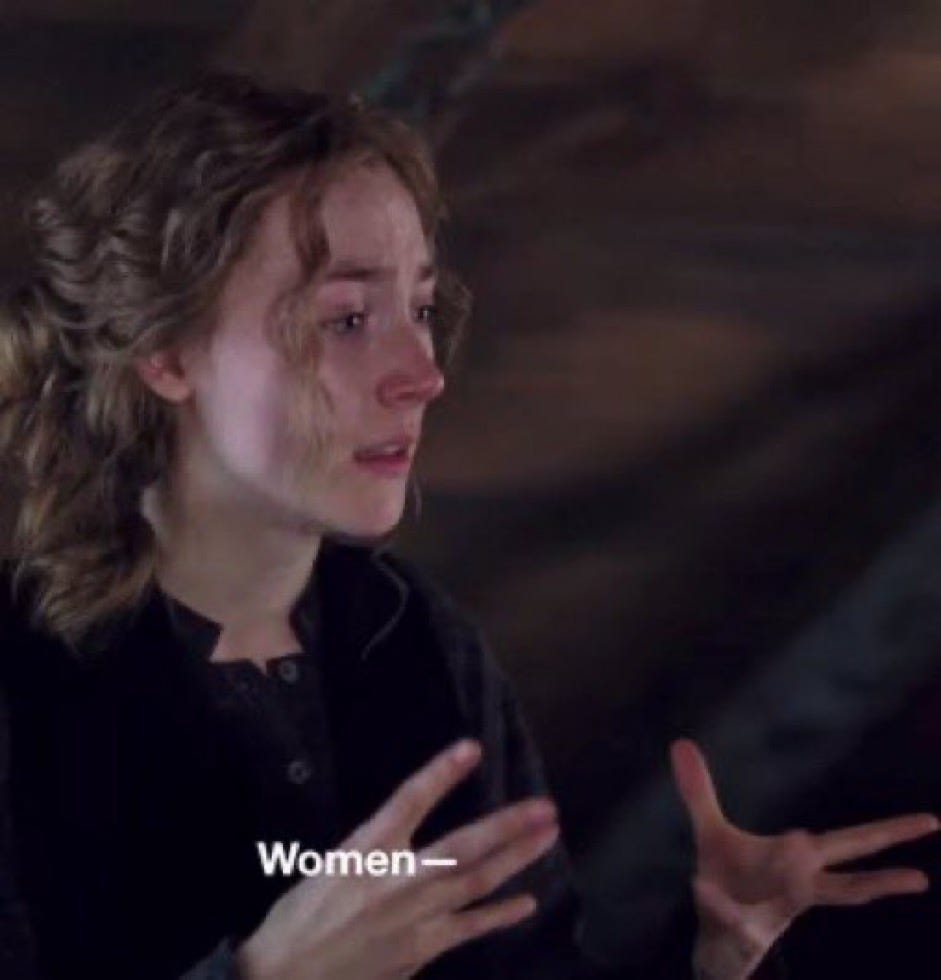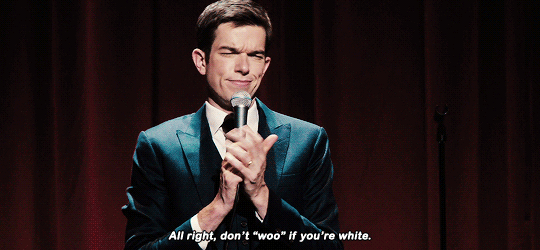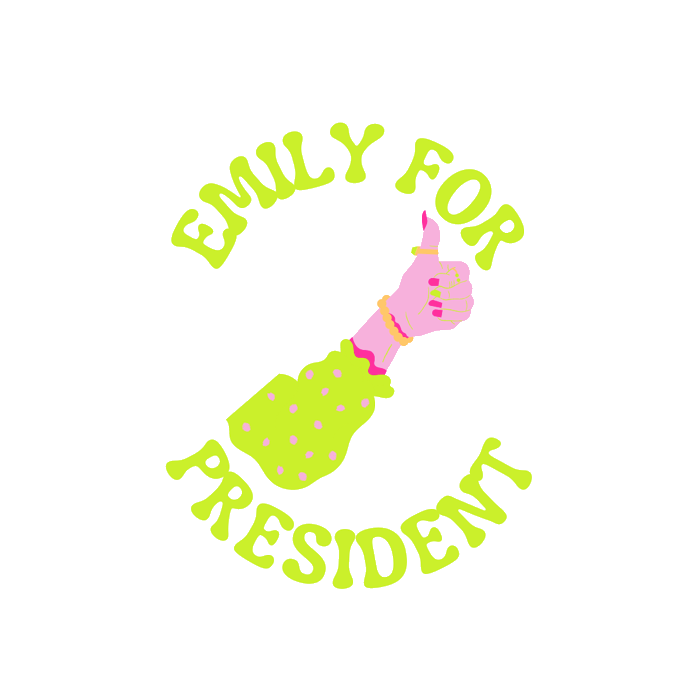This post is too long to appear in full in your inbox. I don’t know where it will cut off in the email version, but it will be available online. See you there!!!
There’s an old saying that after your biggest flop comes your greatest slay. And friends, I had an undeniable flop recently. Originally, I had planned to run a climate change panel on Earth Day, but I was told in gentler terms that the questions were too demoralizing for anyone to want to answer.
Needless to say, we’re not talking about the Earth today…per se. Instead, we’re pivoting to a conversation that may still demoralize you if you’re prone to bad reactions.
This past Saturday was 4/20, a day on which cannabis and cannabis consumption are commonly celebrated. To mark the occasion, I asked four previous guests questions while they were partaking in the holiday to infuse into our discussion. Alongside this pure innocent fun, we’ll look at weed’s current star turn, its mixed legal status across the country, and why marijuana law reform is the best way to celebrate all of the 4/20s to come.
You’ll Believe Weed Is a Woman
When I first started writing this piece, I was hellbent on not explaining exactly what weed was, thinking, “We all get it, and laying it out would be pointless.” Readers, clock this in as my second flop of the week because understanding what exactly marijuana is becomes pretty important pretty quickly in today’s conversation.
Marijuana1 is a psychoactive drug made up of 483 active compounds. For the sake of today’s discussion, I want to focus on THC and CBD, as well as the differences between them. Cannabidiol, or CBD, is one of the compounds that can be derived from marijuana plants or hemp plants.
Hemp is legal at the federal and state levels around the country which is how CBD products have become so readily available. CBD and CBD products do not produce a high when consumed, as opposed to tetrahydrocannabinol (THC) which is the psychoactive compound in cannabis plants that produces the notorious weed high.
Why are hemp plants legal, you ask? The best explanation I was able to find also came with a really fun fact: hemp plants are “a mixture of male and female cannabis plants, and its flowers produce less than 0.3% THC,” while “marijuana plants are mostly bred as female plants that produce more than 0.3%, and up to 30% THC” (X).2
I also want to beat a dead horse and emphasize the differences between medical and recreational marijuana usage. While cannabis has been used in traditional medicine for centuries, weed has only been used for medicinal purposes in the United States since 1996 when California passed the Compassionate Use Act.3
Many individuals use cannabis for pain relief as “it is clearly safer than opiates (it is impossible to overdose on and far less addictive) and it can take the place of NSAIDs such as Advil or Aleve, if people can't take them due to problems with their kidneys or ulcers or GERD” (X). It also serves as a muscle relaxant, helps those with multiple sclerosis manage their nerve pain, and can reduce nausea for patients undergoing chemotherapy.
As for recreational use, dare I double quote Harvard Medical School twice to say that compared to other drugs, marijuana “is impossible to overdose on and far less addictive.”4 There are countless reasons why people consume weed recreationally and it’s not key to our conversation to list them all. Still, I can share my personal experience to scratch the curiosity itch: while I do occasionally enjoy weed simply for the high—can you blame a girl?—it has also significantly helped me manage my lifelong insomnia and, admittedly, my anxiety.
I feel comfortable sharing that with the Internet because, for one thing, recreational marijuana use is legal in the state of New York. And, for another, most Americans are cool with me chomping down on little sour gummy chews the sweet, sweet devil’s lettuce. According to a Pew Research Center report published this month, 57% of Americans believe marijuana should be legal for medical and recreational use. An additional 32% think it should be legal exclusively for medical use, while 11% are narcs, I guess.
These numbers suggest changing sentiments about cannabis consumption and are particularly interesting because only about 50% of Americans say they have ever used a cannabis product. For reference, the Center report compares that number to “the 84.1% who say they have ever consumed alcohol and the 64.8% who have ever used tobacco products or vaped nicotine.”
With all of this said you may still be wondering why weed has become so trendy that it is now an acceptable Real Housewife side hustle. The answer is that no one really knows. The best rationale I can find comes from an article published by the National Institutes of Health’s National Center for Biotechnology Information in 2017, which explains that
the years since 2007 have seen steady year-over-year increases in general population past-month use, rising from 5.8 percent to 8.4 percent in 2014 (a 45 percent increase). There is no single clear explanation for the post-2007 increases in use. Hypothesized causes include declining potency-adjusted prices on the illicit market; the proliferation of medical cannabis laws, especially those that allow for sale at brick-and-mortar dispensaries; and changing public perceptions about the harms of cannabis use (Sevigny et al., 2014).
With the rise in general okayness with marijuana in general, there have also been increased calls for drug law reform and overturning prior convictions for marijuana possession.
BB, 26, she/her:
Emily: Dream blunt rotation?
Blair: Snoop Dogg, Martha Stewart, Roo, and Jake from TikTok
Emily: Taylor Swift?
Blair: Yes.
Emily: How do you prefer to consume weed?
Blair: A little jointy joint.
Emily: What’s one thing you can’t stop thinking about right now?
Blair: I want to lay down and watch TikTok.
CA, 26, she/her:
Emily: Dream blunt rotation?
CA: Jason Segel, Linda Cardellini, Pedro Pascal, Ian Somerhalder, Adam Brody
Emily: What is your go to sweet treat when you’re high?
CA: Insomnia Cookies
Emily: How do you prefer to consume weed?
CA: Socially. Smoking a joint.
Emily: Can you share a TikTok that made you laugh recently?
CA: X.
The Legal Side of Weed
I should start this section by noting that although marijuana is still illegal at the federal level under the Controlled Substances Act of 1970, “the Justice Department has generally not enforced federal law in states that have legalized recreational cannabis” (X). It is currently still classified as a Schedule I drug along with heroin, LSD, and ecstasy.5 Kind of like how Liam Payne is still classified as a former member of One Direction along with Harry Styles and Niall Horan.
The legal status of marijuana at the state level varies based on what state you live in:

Before we continue with this section, I want to speak something into the record of this newsletter: the majority of the problems with how our country’s population views and takes care of one another are rooted in the belief that morality is stronger than evidence.6 While we don’t have enough time today to scratch more than just the surface of the history of the War on Drugs, you don’t need a deep dive into it to see how the campaign has clearly done more harm than good—and not just because it allowed me space to cyberbully Liam Payne.
Moving on: in 1972, the Shafer Commission “concluded that cannabis did not cause widespread danger to society. It recommended using social measures other than criminalization to discourage use. It compared the situation of cannabis to that of alcohol.” While the Nixon White House (which assembled the Commission) largely ignored these findings, states began decriminalizing marijuana based on its recommendations starting in 1973.
Decriminalization removes “prosecutions against an action so that the action remains illegal but has no criminal penalties or at most some civil fine” (X). This differs from legalization—or, “removing a legal prohibition against something which is currently not legal”—which states began to do with non-medical weed possession and use starting in 2012.7
At this point in the section, you might either still be wondering why I had my little outburst a couple of paragraphs ago or you might know exactly what I’m going to say next. In John Mulaney’s 2015 Netflix special, The Comeback Kid, he does a bit about weed that goes, in part:
The weirdest thing when I was a kid was how much they scared us about smoking weed. They scared us about it constantly. And I’ve been on tour this year… Marijuana is legal in 18 or 19 states in some form or another. It’s insane. Yeah, well…All right, don’t “whoo” if you’re white. It’s always been legal for us. Come on, sir. We don’t go to jail for marijuana, you silly billy. When I was arrested with a one-hitter at a Rusted Root concert, I did not serve hard time. I think I got an award.
According to the American Civil Liberties Union, “in the United States, between 2001 and 2010, a Black person was almost four times more likely to be arrested for marijuana possession than a white person was, despite approximately equal rates of use.” While they have decided to defend the NRA (and have some…outdated wording on their website), the ACLU also has a great number of resources and case studies on how disproportionately harmful the criminalization of cannabis has historically been in America.
Not only that, but they explain in simple terms why decriminalization and legalization should also be followed by expungement of non-violent drug arrests from records. In 2019, Illinois became the 11th state to legalize recreational marijuana use which was significant because
almost half of all drug arrests were for cannabis-related offenses. In 2010, two years before Chicago City Council decriminalized pot, over 33,000 arrests were made for marijuana possession. That’s 91 arrests for pot per day – the highest in the country, and most of these were for 10 grams or less. And while arrests rates for folks smoking weed has plummeted in Chicago (Illinois’ largest city) during the last few years, the rates of the disproportionate application of enforcement has remained atrocious.
In fact, despite constituting 36 percent of the population of Chicago, in 2016 78% of all marijuana arrests were of Black people and less than 5% were of white people.
As this data and John Mulaney’s bit both get at, arrests for cannabis possession often have less to do with the possession and more with who is possessing it.8 And, even after legalization, racial disparities can still exist. According to the ACLU’s 2020 report on marijuana reform,
in some legalized states, the disparities actually got worse. For example, Maine went from a disparity of 2.1 in 2010 to 4.0 in 2018. In other legalized states, the disparities did improve, dropping from 4.0 to 3.0 in Nevada and from 2.2 to 1.8 in California, for example. These results clearly indicate that neither decriminalization nor legalization of marijuana possession alone eliminates the disproportionate criminalization of Black people in marijuana regulation and enforcement.
There are so many other elements that factor into this data that activists and researchers have spent their careers analyzing and advocating for. We could talk about this for many more E4Ps to come! But, as the ACLU aptly explains: “While progress in reforming our nation’s drug laws is vital, we must remember that if we legalize without righting the wrongs of past marijuana enforcement, we risk reinforcing the decades of disproportionate harm communities of color have faced and endured.”
Unfortunately, the answer to the question, “How do we right our wrongs?” when it comes to marijuana reform largely relies on how Joe Biden feels about weed today.
AD, 23, she/her:
Emily: Dream blunt rotation?
AD: Drake and Larry David
Emily: Sweet, salty, sour, or savory?
AD: Need all sorry.
Emily: What’s one thing you can’t stop thinking about right now?
AD: Wow it’s such a beautiful day.
Emily: Are you more Snoop Dogg or Martha Stewart?
AD: Martha Stewart
GC, 27, she/her:
Emily: Dream blunt rotation?
GC: Charli D’Amelio, Jack Antonoff, WNBA star Caitlin Clark, and Billy Eichner
Emily: Taylor Swift?
GC: Yes. My nightmare blunt rotation includes Matty Healy and did before TTPD.
Emily: What do you predict will be your personal song of the summer?
GC: My personal summer song is “Red Wine Supernova” by Chappell Roan
Emily: Can you share a TikTok that has made you laugh recently?
GC: X.
Alright, So You Killed the Buzz…That Don’t Impress-a Me Much
In this year’s State of the Union address, President Biden stated that he plans on “‘directing my cabinet to review the federal classification of marijuana, and expunging thousands of convictions for the mere possession, because no one should be jailed for simply using’” (X).
This came nearly two years after Biden “pardoned thousands of low-level marijuana offenses and directed his administration to review the federal prohibition of cannabis” and one year after “Department of Health and Humans Services Assistant Secretary for Health Rachel Levine called on the Drug Enforcement Administration to change the classification of marijuana from Schedule I to Schedule III” (X). Yes, this is good on him to do and say but there are two caveats: the first is that the DEA has not changed weed’s drug classification, and the second is that the majority of marijuana offenses—like the laws themselves—are handled at the state level.
So what can be done from here?
I know I haven’t given any air to arguments against legalizing cannabis primarily because nearly all of those arguments have been disproven through further research. Voting to decriminalize marijuana medically or recreationally—even if you do not plan on smoking fat doobies yourself—will almost certainly have a net positive effect on your state and community. Marijuana measures will potentially be on the ballots in Nebraska, South Dakota, Idaho, Missouri, and Arkansas this fall, so keep your eyes on Ballotpedia if you’re registered to vote in any of these states.
If your state has legalized possession and use, look into its initiatives. Illinois, which was mentioned in the last section,
will begin reinvesting in the communities most hampered by the war on drugs. 20% of the money will be allocated to mental health and substance abuse programs and 25% will be allocated to the pioneering R3 program (Recover, Reinvest and Renew)…by using the revenue generated by taxation of the new recreational cannabis market (X).
While other states like Massachusetts and California have passed similar initiatives, not every state that has legalized cannabis has. See if and how you can get involved in grassroots organizations and movements to bring similar reform efforts to your state if that is an option and something you're passionate about.
And if you live in New York City, a very small but easy way to have an impact is to buy your weed from Housing Works Cannabis Co. which sells “products from LGBTQ+, BIPOC, and women-led brands, as these communities have been disproportionately affected by drug criminalization” and donates all of its profits to Housing Works.
Gleefully, we’re not all Joe Biden. But with that fact, the best we can do as individuals who do not have much control over the railways or the flow of commerce is the least harm possible. Or, I don’t know, maybe get a little high and dream up a brilliant strategy for equity-centered policy initiatives you can advocate for at the local and state levels, before eventually moving your way up the bureaucratic ladder.
Just a thought.
Emily, 26, she/her:
Emily: Dream blunt rotation?
Emily: Gwyneth, Barbara Walters, Taylor Swift
Emily: What do you predict will be your song of the summer?
Emily: “Temporary Fix” by One Direction
Emily: How do you prefer to consume your weed?
Emily: Edibles, and the guy at my dispensary told me only old people buy my favorite brand. Have to live with that now.
Emily: What is your go-to sweet treat when you’re high?
Emily: Siete churro chips and those Unreal coconut bars. I freeze them which I feel makes them even better. (I literally just ran to get one after typing that.)
Thank you to everyone who texted me while high, including myself!!! Shout out to David Melgoza for this idea many moons ago—we’re fated to recreate it on camera eventually.
I interchangeably refer to marijuana as cannabis, as in the name of the plant cannabis products come from, and weed, because no one calls it pot anymore…except for the ACLU, I fear.
Shoutout to Arthritis and Rheumatism Associates, P.C.!!!
According to Wikipedia, “It is unclear when cannabis first became known for its psychoactive properties…the oldest archeological evidence for the burning of cannabis was found in Romanian kurgans dated 3,500 BC, and scholars suggest that the drug was first used in ritual ceremonies by Proto-Indo-European tribes living in the Pontic-Caspian steppe during the Chalcolithic period” (X).
Real ones will get this reference to a key piece of Emily Lore…you know who you are.
Mind you all, that’s higher than the drug classification for fentanyl and methamphetamine.
Both scientific and anecdotal evidence, to be clear.
At this moment, marijuana is fully legal in 24 states, two territories, one commonwealth, and Washington D.C., decriminalized in seven states, and available medically in 38 states.









Obsessed with this breakdown and the personal anecdotes!! Would be curious about a crossover episode comparing alcohol to weed and questioning whether weed has led to a decrease in alcohol consumption for people (it definitely has for me!)
Never say never!!! 👀🤭